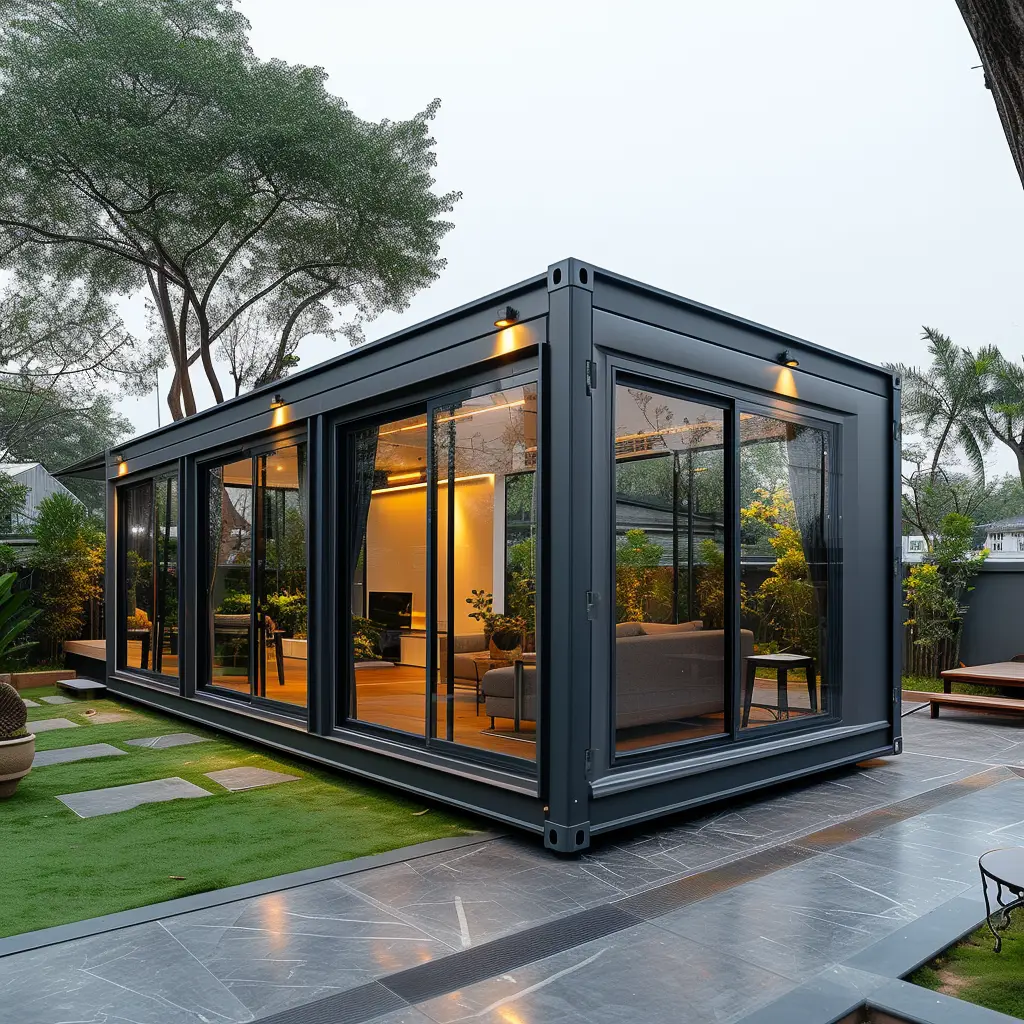Are Customised Shipping Containers the Future of Affordable, Flexible Spaces?
Shipping containers are no longer just metal boxes crisscrossing the globe on giant ships. They’ve evolved into chic office spaces, pop-up cafes, and even cosy homes. But is customising a shipping container worth the hype? Whether you’re thinking about a unique office or a sustainable tiny home, let’s break down the pros and cons of jumping into this steel-framed trend.
Introduction
Customising shipping containers has gained massive popularity in recent years as an affordable, sustainable alternative to traditional construction. The concept is simple – take a container, cut a few windows, add insulation, throw in some plumbing, and voila! You have a home, office, or retail space. It seems like a no-brainer with benefits like cost-efficiency, flexibility, and a shorter construction period. But with every good idea comes its fair share of challenges. While the possibilities of a shipping container space seem endless, they might not suit everyone’s needs.
Is a repurposed steel box the solution to our housing and space needs, or are there hidden downsides that most enthusiasts overlook?
The Pros of Customising Shipping Containers
1. Cost-Effective Construction
For many, the appeal of using a shipping container starts with affordability. Traditional construction is expensive, with rising labour and material costs, but a second-hand shipping container can cost a fraction of a conventional building.
It’s a great starting point for budget-conscious entrepreneurs or homebuilders. With a little creativity and DIY enthusiasm, you can design an impressive space for a fraction of the price. Even when hiring professionals to make structural changes, shipping containers are a wallet-friendly option.
2. Eco-Friendly and Sustainable
The environmental benefits are hard to ignore. Shipping containers are often retired after a few years of service, ending up in scrapyards or junkyards. By reusing these containers, you’re repurposing an already-made product rather than consuming more raw materials. This reduces your carbon footprint. Additionally, by adding eco-friendly features like solar panels or rainwater harvesting systems, you can take sustainability to the next level.
3. Durability and Strength
Built to withstand the rough conditions of sea travel, containers are incredibly strong. Made from corten steel, they are rust-resistant and designed to endure harsh weather conditions. A shipping container home or office is durable and can withstand the elements, making it ideal for both urban and rural environments. Its structural integrity is especially valuable in areas prone to extreme weather.
4. Speedy Construction
With a shipping container, you’re essentially working with a ready-made structure. This significantly cuts down construction time compared to traditional building methods. With a good design and efficient execution, your container space can be ready in a matter of weeks, rather than months or years.
5. Mobility and Flexibility
A shipping container space offers flexibility that most traditional structures can’t. Need to move locations? No problem. You can pick up and relocate your entire structure. This feature is especially attractive to businesses that operate temporary pop-up locations or festivals.
6. Design Versatility
With containers, the design possibilities are endless. You can combine multiple containers to create larger spaces, stack them for multi-storey buildings, or cut and shape them to fit your vision. Whether it’s a minimalist office, a quirky café, or a luxury home, containers are versatile enough to support a range of styles.
The Cons of Customising Shipping Containers
1. Limited Space and Size
While shipping containers come in different sizes (typically 20 or 40 feet long), they offer limited width, which can be a challenge when designing living or working spaces. For some, this limitation results in cramped interiors, especially for those used to larger homes or office spaces. Expanding by adding more containers is possible but adds complexity and cost.
2. Insulation and Climate Control Challenges
Shipping containers are made of metal, which makes them tricky to insulate properly. Without adequate insulation, they can become unbearably hot in the summer and freezing in the winter. Insulation solutions exist, but they can significantly increase the overall cost. Plus, proper ventilation systems are essential to avoid condensation, which can lead to mould and other problems.
3. Permitting and Zoning Restrictions
Depending on where you live, the dream of having a shipping container home or business might be stifled by local building codes and regulations. Some areas do not permit container buildings, while others have strict zoning laws that make the process complicated. Always check with your local authorities before investing time and money into the project.
4. Maintenance and Wear
While containers are designed to be durable, they’re not immune to wear and tear. Over time, rust, dents, and structural damage may occur, especially if the container has been previously used for shipping. Regular maintenance is necessary to keep the structure safe and functional.
5. Cost of Modifications
The initial cost of purchasing a shipping container may be low, but modifications can add up quickly. Cutting windows, adding plumbing, and installing electrical systems all require specialised labour and materials. Before you know it, your affordable container might turn into a pricey project.
6. Potential Health Risks
Some used shipping containers might have been exposed to toxic chemicals during their time at sea. Without proper treatment, these contaminants could pose health risks. It’s essential to purchase containers that have been certified as safe for habitation or use a professional to clean and treat them before customising.
Case Study: Turning Shipping Containers into Luxury Retail Spaces
A perfect example of the potential of customising shipping containers can be found in London’s Boxpark. Situated in Shoreditch, this pop-up mall is entirely constructed from repurposed shipping containers and has become a beloved retail hub. The project kicked off in 2011 and offered an affordable solution for retail brands looking to test the waters in a prime London location without the astronomical rents.
The flexibility of the design allowed smaller brands to rent a ‘box’ and customise it to reflect their brand’s identity, turning standard steel containers into vibrant, unique storefronts. Not only did it prove financially viable, but it also resonated with the eco-conscious consumers, as the project used upcycled materials.
Boxpark’s success has sparked interest globally, with similar container parks popping up in cities like New York, Dubai, and Melbourne. This is a prime example of how shipping containers can be used to create innovative, stylish spaces that defy the typical limitations of traditional construction.
“Customising shipping containers is like playing with giant metal LEGO pieces – the possibilities are only limited by your imagination and budget.”
Customising shipping containers can offer an affordable, sustainable, and flexible alternative to traditional construction. However, it’s not without its challenges, from limited space to insulation concerns. Whether it’s the right choice depends on your budget, location, and specific needs. Before diving in, consider the pros and cons, and always consult with professionals to avoid potential pitfalls.
Curious to see if a shipping container is the right fit for your next project? Let’s discuss how this trend could work for you!









